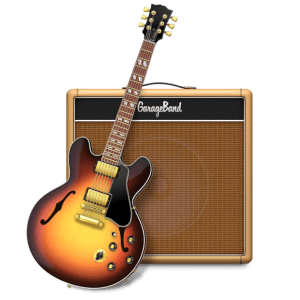For all iPhone owners and first-time GarageBand users, some beforehand knowledge is a must. Apple Inc. provides GarageBand as a pre-installed app in all its iOS devices. For those who have just started understanding the features of their iPhone, skipping to GarageBand can be challenging. With a huge selection of features and tools, GarageBand basics can only be learned using a guidebook.
GarageBand is a great way to create music on your iPhone. Let us understand how to get started with one of Apple’s best software offerings, GarageBand.
Pre-requisites for Getting Started
When you open GarageBand for the first time, the app will ask you to download some sound files. These will help you with options while creating new music. Furthermore, various instruments will have to be downloaded too. For any greyed-out instrument or loop title, with a downward-facing arrow, the file must be downloaded by clicking on the arrow.
Once this is done, you must set the tempo under the Beats & Project window. Although the default tempo is 120 beats per minute, the same can be changed by double-clicking the value and feeding a new one.
Inside GarageBand
When you start up GarageBand, go to File and select New. The library is on the left, to help you choose from various instruments. On top-right is the panel called workspace that gives a view of the recorded and instrumental tracks. On the bottom-right is the editor to help edit your tracks. Above all this is, the musical typing keyboard where you can play notes using iPhone’s keyboard.
Features of GarageBand
Below is a list of essential features that you must know before using the app:
- Live loops: Live Loops allows you to sequence existing recordings, real-time. Select the music genre of your choice. Next, you’ll be taken to a grid with several colored squares representing a loop. Just tap on each square to start or stop the music, adding others whenever required. GarageBand will begin each one on the correct beat, so you can’t make any mistakes. Hitting the arrow at each column’s bottom will also turn on all the squares at the same time.
- Recording Live Loops: After using Live Loops to create a sequence, the next step is to record it. Press the record button, located at the top of the screen. Once it starts, play the loops in the decided sequence, and after it is completed, tap the stop button. That is how you record a track.
- Touch Instruments: To be more creative, you need instruments. Touch instruments are virtual guitars, pianos, strings, etc. that can be played online.
- Keyboards: On keyboards, you have the keys for different functions, with the options just above them.
- Guitars: Just like the keyboards, there are virtual guitars options. These virtual guitars include acoustic, electric, bass, etc., and can be played in different modes. The main screen shows the guitar’s fretboard, and tapping on any area will play the note. Also, even bending up or down by keeping the finger pressed, will work.
- Drums: Another great feature is Smart Drums that allows you to drag and drop various elements of a drum kit in a square grid. All four sides of the square are marked with the signs- Loud, Quiet, Complex, and Simple. Hence, if you want a loud snare, then put it near those two sides.
- Live Audio: The microphone on your iPhone can help you record live audio, without any other interfaces.
All these tools are only to get you started with this super cool digital studio. Once you have started recording music on the GarageBand, you’ll be able to explore further.
